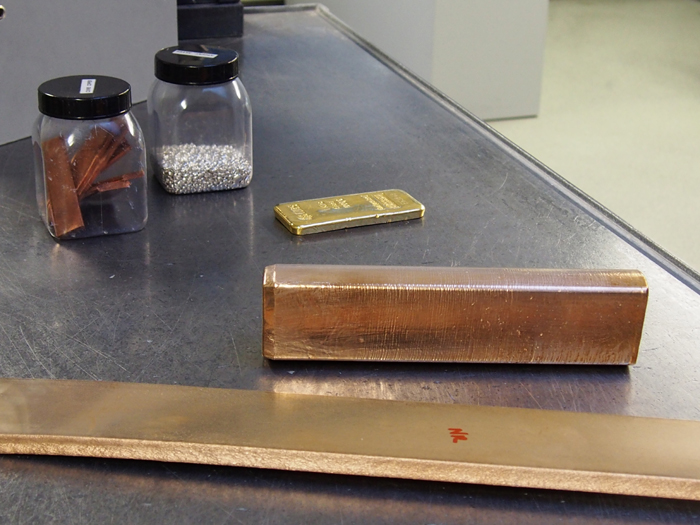Recently, I had the grand opportunity to visit Chopard in Geneva to see the one thing I had not yet seen in watchmaking: Gold melting for case making. While it is not the most glamorous portion of watchmaking – melting gold and mixing the colors of gold is one process that few brands actually do on their own premises. Essentially, the creation of gold cases starts with a pretty hefty bar of the real stuff. At Chopard, that bar of real stuff comes in the form of a 1 kilo (1000 grams) bar of 999.9 gold (meaning it is 999.9 parts of gold out of 10,000 parts, or, in other words, 99.9% gold purity by weight. Gold bars are manufactured in different degrees of purity (or fineness) with most ranging between 965 and 999.9. I held that kilo of the purest gold available in my hands – it weighed a couple of pounds + and – on that particular day – was worth about $45,000.
After ogling the gold bar (though I doubt the alchemists so used to handling gold at Chopard actually ogle it – but I did), it is then determined based on need and production, whether it will become a case of yellow, pink (3N, 4N or 5N) or white gold. At this point, the proper metals (and the proper amount of each metal) used to turn the gold into the proper final color are allocated to the mix. Nickel for white, copper for pink, rose or a deeper red hue depending on the amount added.
Then, the metallurgist adds the gold bars and the appropriate materials in to a secure oven, where it is melted together with a continual stirring/mixing process at molten heat for about 20 to 30 minutes. It then is left to cool. When the final cooled metal is removed from the oven, where it has been formed in a cylinder, it is tapped gently with a hammer until the newly created gold bar is released. This bar is then worked by hand on machines that continually press it thinner and thinner to finally achieve a bar that is properly sized for the machine cutting of the cases.
In all, formulating and melting gold is not a luxurious, entrancing process – as most of the true work is done inside the oven — but it is a super-important part of the process, enabling Chopard to carefully track the purity and luster of its gold. Of course, after the cases are cut, the magic of polishing, finishing and more takes place (but that’s a different story).






